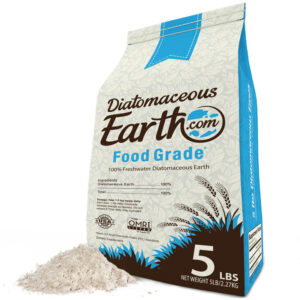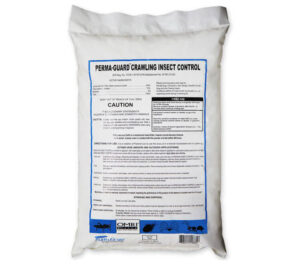Borax, also known as sodium borate, is a household staple for many DIYers, crafters, and slime enthusiasts. It’s often found in laundry rooms, cleaning supply cabinets, and even science kits. But with all its usefulness, many people wonder: is burning borax toxic?
This is a valid and important question—especially for those experimenting with chemistry, metalwork, or flame color projects at home or in classrooms. In this article, we’ll explore what happens when borax is burned, why it can be dangerous, and how to handle it safely.
Let’s break it down in a clear, detailed, and user-friendly way.
What Is Borax?
Before we get into the fire hazard discussion, it’s essential to understand what borax actually is.
Borax is a naturally occurring mineral compound, primarily made of:
-
Sodium
-
Boron
-
Oxygen
-
Hydrogen
In chemical terms, its formula is Na₂B₄O₇·10H₂O, which means it’s a hydrated salt. It dissolves in water and is commonly used in:
-
Laundry boosters
-
Slime recipes
-
Homemade cleaning products
-
Ant and pest control solutions
-
Glass and ceramic glazes
Because of its affordability and versatility, borax is widely used by hobbyists, students, and professionals alike.
Is Borax Flammable?
Here’s the good news first: borax is not flammable.
It won’t catch fire under typical household conditions and doesn’t pose a fire risk when stored or used properly. If you drop borax powder near an open flame, it won’t ignite or explode like gasoline or flour dust.
However, when borax is exposed to extremely high temperatures, things get more complicated—and that’s where safety concerns begin.
What Happens When You Burn Borax?
When borax is heated, particularly with an open flame, it decomposes rather than burns. This decomposition leads to the release of various chemical byproducts, one of which is boron oxide (B₂O₃)—a substance that can be irritating and harmful to the human body if inhaled.
Here’s what happens in stages:
-
Dehydration: Borax loses its water content when exposed to heat.
-
Transformation: The dehydrated borax forms a glass-like compound known as boron oxide.
-
Fume release: Depending on the temperature and method of heating, borax may release irritating fumes that can affect the eyes, nose, throat, and lungs.
So while the borax itself isn’t catching fire, the heat alters its chemical makeup—and this reaction is what makes it potentially toxic.
Is Burning Borax Toxic?
Yes, burning borax can be toxic depending on the exposure level, the environment where it’s burned, and how it’s handled.
The main dangers come from:
-
Inhaling the fumes
-
Repeated exposure over time
-
Lack of ventilation or safety gear
Boron oxide fumes can cause:
-
Coughing and throat irritation
-
Difficulty breathing or shortness of breath
-
Watery, burning eyes
-
Headaches or dizziness
For people with asthma or other respiratory conditions, exposure to these fumes can be even more dangerous, potentially leading to more severe symptoms or long-term irritation.
Scientific Backing on Borax Fume Inhalation
According to occupational safety research, long-term exposure to borate dust or fumes can cause respiratory issues and even affect reproductive health in large doses. This is why industrial workers handling borax are usually required to wear respirators and protective eyewear.
While burning borax for a science experiment or metalworking job may not expose you to large amounts immediately, doing it repeatedly or in an enclosed space can lead to cumulative exposure risks.
Common Situations Where People Burn Borax
Here are a few scenarios where someone might be tempted to burn borax—intentionally or not:
-
Science experiments (like flame test demonstrations)
Borax can produce a green flame due to the presence of boron, making it popular for chemistry classes. -
Metalworking and soldering (as a flux)
In these contexts, borax is used to clean metal surfaces and assist with binding during welding or jewelry making. -
DIY “fire tricks”
Some online tutorials suggest burning borax to create colorful flames for entertainment, often without proper warnings.
In all of these cases, it’s crucial to prioritize ventilation, safety gear, and proper disposal.
Is It Safe to Burn Borax at Home?
No, it is not safe to burn borax at home, especially in small, enclosed spaces like a kitchen or bedroom.
Unless you have access to a fume hood, safety goggles, gloves, and proper air circulation, you shouldn’t attempt to burn borax. Even short exposure to the fumes can irritate your respiratory system—and repeated exposure can have longer-term consequences.
Children should never be allowed to burn borax or experiment with it over flames without strict adult supervision and safety protocols.
Safer Alternatives for Flame Color Experiments
If your goal is to experiment with flame colors—perhaps as a fun science activity—there are safer alternatives:
-
Buy a commercial flame colorant kit: These are designed for campfires and are labeled for safe usage.
-
Use LED lights or glow powders: These offer similar visual effects without the risk.
-
Stick to food-safe experiments: Use baking soda and vinegar volcanoes or mentos and soda geysers instead.
When experimenting, safety should always come first—especially when children are involved.
What to Do If You Accidentally Burn Borax
If you’ve accidentally burned borax or been exposed to the fumes, follow these steps:
-
Leave the area immediately and get fresh air.
-
Ventilate the room by opening windows or using fans.
-
Avoid touching your eyes or face, especially if powder or fumes are present.
-
Rinse your eyes or skin with clean water if you feel any irritation.
-
Seek medical attention if you experience difficulty breathing, chest tightness, or lingering symptoms.
Final Thoughts: Is Burning Borax Toxic?
In conclusion, while borax is a safe and useful substance for cleaning and crafting when used correctly, burning it can absolutely be toxic.
To recap:
-
Borax is not flammable, but it does release harmful fumes when exposed to high heat.
-
Burning borax indoors or without safety gear is dangerous and should be avoided.
-
Inhalation of boron oxide fumes can cause short-term irritation and long-term health risks.
-
If you’re interested in flame color experiments or crafting, explore safer alternatives that don’t put your health at risk.
Always handle chemicals—no matter how common—with care, knowledge, and respect. When in doubt, opt for a safer method, especially when kids are involved. And remember: science is fun, but safety is essential.


